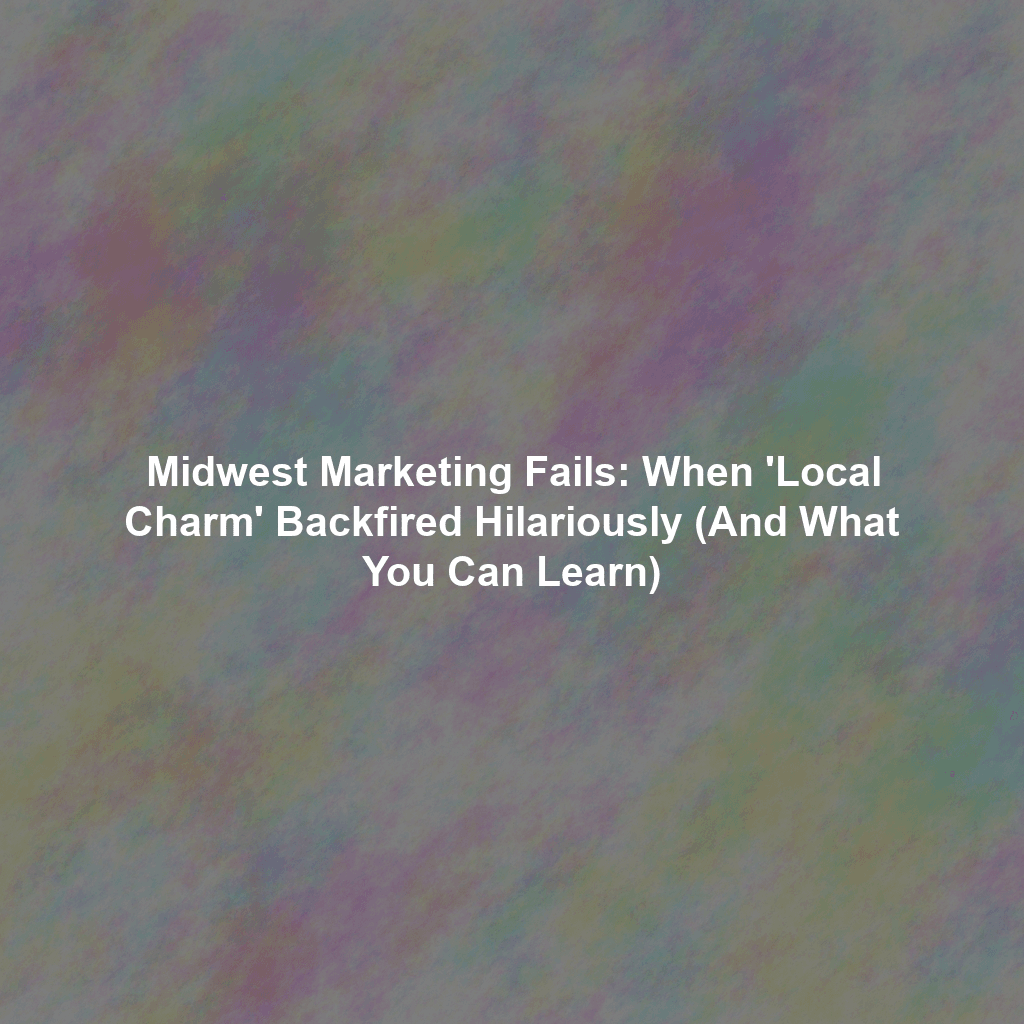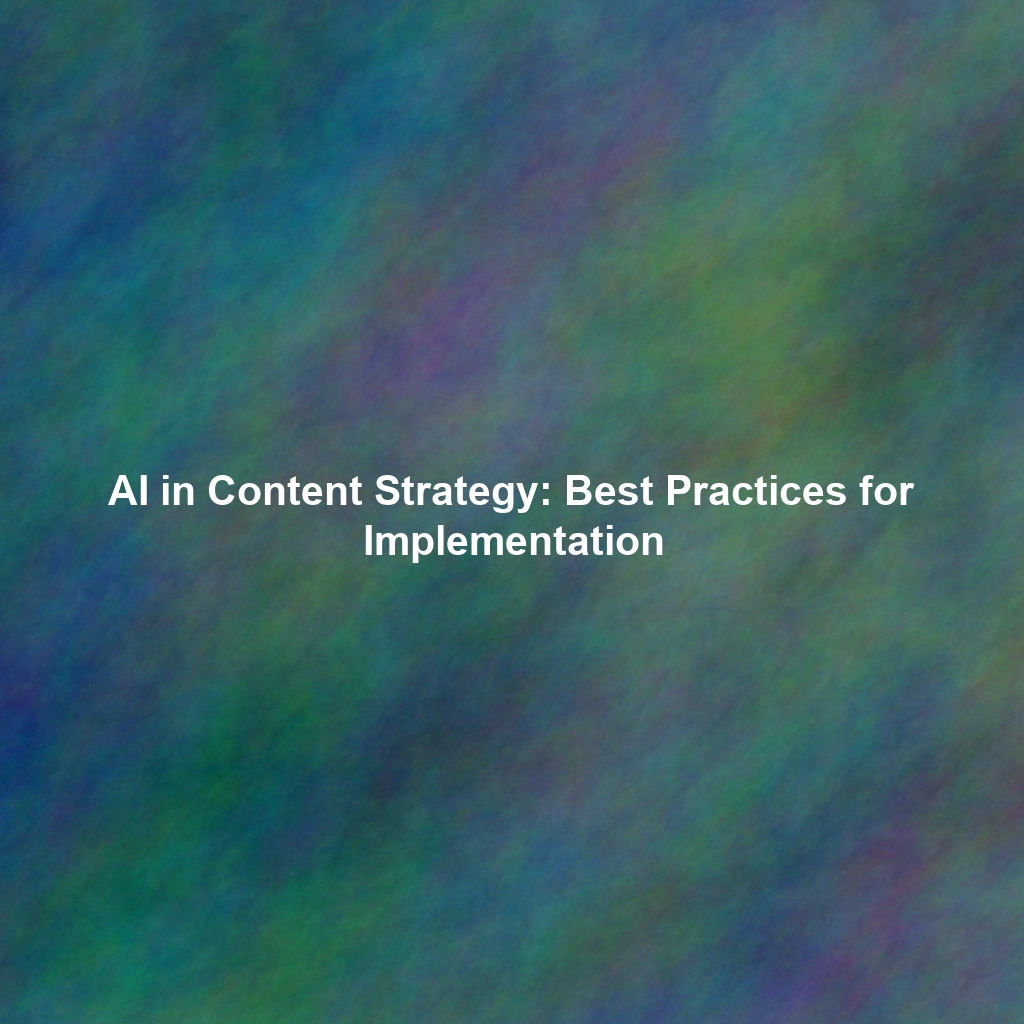Ah, the Midwest. That vast expanse often painted with broad strokes of golden cornfields stretching to the horizon, punctuated by the friendly, almost obligatory wave. It’s a region many outside its borders envision as a bastion of wholesome values and uncomplicated living. But for marketers venturing into this heartland, attempting to cash in on these very stereotypes can be akin to navigating a field of landmines. The path to connecting with Midwest audiences is paved with good intentions, but littered with the wreckage of campaigns that veered into caricature, resulting in moments of collective regional cringe that have become marketing folklore. Let’s pull back the curtain on some real-world examples where the pursuit of “local charm” went spectacularly off the rails – sometimes hilariously, sometimes with a resounding thud – and extract some crucial takeaways for marketers aiming to avoid similar missteps.
The Treacherous Terrain of Stereotyping: Beyond the Cows and the Casseroles
The initial, and arguably most pervasive, blunder marketers make when targeting the Midwest is their unwavering reliance on tired, often outdated, and overly simplistic stereotypes. Think endless rows of corn swaying in the breeze, idyllic dairy farms dotting the landscape, and an assumed universal fondness for potlucks featuring some form of creamy casserole. While these elements might indeed be *part* of the Midwestern fabric, they are far from the complete picture. In fact, aggressively pushing these images can feel not only inauthentic but downright patronizing, particularly to the increasingly diverse populations thriving within the major metropolitan centers of the region. The Midwest isn’t a Norman Rockwell painting come to life in its entirety; it’s a complex tapestry of urban sophistication and rural charm, of diverse industries and evolving cultural landscapes. To reduce it to a handful of agrarian tropes is to fundamentally misunderstand its people.
The “Hometown Hero” Hamburger Debacle: A Taste of Inauthenticity
Remember that national fast-food behemoth that, in a misguided attempt at regional appeal, decided to launch a “Hometown Hero” hamburger exclusively in Iowa? Their vision, presumably hatched in a boardroom far removed from Des Moines, involved a supposedly wholesome, “farm-fresh” patty, boasting ingredients they vaguely claimed were sourced entirely from “local farmers.” It painted a picture of idyllic agricultural synergy, a burger born from the very soil of Iowa. The problem? The accompanying advertising campaign was a masterclass in stereotypical misrepresentation. It featured saccharine images of a cartoonishly rosy-cheeked farmer, clad in stereotypical overalls and a straw hat perched jauntily on his head, sporting a vacant, almost comical grin. The accompanying tagline, “Taste the Heartland!” felt less like an invitation and more like a punchline.
The backlash from Iowans was swift, unified, and often delivered with the dry wit the region is actually known for. Locals were quick to point out that modern Iowa farmers are sophisticated businesspeople, often wielding advanced technology and navigating complex global markets – not the simplistic caricatures ripped from the pages of a vintage children’s book. Furthermore, the claim that the ingredients were “locally sourced” turned out to be rather loosely interpreted. While the beef might have originated *somewhere* within the state’s borders, it wasn’t truly integrated into localized, transparent supply chains, leading to widespread accusations of greenwashing and a fundamental lack of authenticity. The campaign, met with derision and a distinct lack of appetite, was quietly and swiftly pulled from the airwaves and menus within a matter of weeks, unceremoniously replaced by a more generic, and ultimately more respectful, marketing approach.
Lesson Learned: When marketing to the Midwest (or any region, for that matter), steer clear of relying on tired, oversimplified stereotypes. Conduct thorough, on-the-ground research to truly understand the complexities, nuances, and realities of your target audience. Authenticity isn’t just a buzzword; it’s the bedrock of connection. Superficial attempts to latch onto a perceived “local charm” without genuine understanding can easily backfire, leaving your brand looking out of touch and potentially insulting.
Lost in Translation: When “Folksy” Falls Flat on Its Face
Another common misstep in the Midwest marketing playbook is the misguided attempt to inject a forced, often exaggerated, “folksy,” or “down-home” tone into marketing materials. What might seem charming or quaint to an outsider unfamiliar with the region’s communication style can often come across as condescending, insincere, and frankly, a bit ridiculous to someone who actually calls the Midwest home. Midwesterners generally value sincerity, directness, and a certain understated practicality in their communication. They appreciate a good deal and a genuine message, but they have a keen nose for anything that smells of contrivance.
The “Gosh Darn Good Deals” Insurance Ad: An Exercise in Cringeworthy Clichés
Consider the ill-fated regional campaign launched by a national insurance company, eager to tap into what they perceived as the inherent “wholesomeness” of the Midwest. Their strategy? To feature a primary spokesperson who spoke in an exaggeratedly folksy dialect, peppered with phrases that felt lifted straight from a bad caricature of rural speech. Every commercial was saturated with lines like “Well now, ain’t these just gosh darn good deals!” and “We offer just plain ol’ fashioned value, folks!” The intended effect was presumably to convey trustworthiness and approachability. The actual result? A wave of collective Midwestern cringe that spread like wildfire across social media and water cooler conversations.
The campaign felt utterly forced and unnatural. Midwesterners, while often friendly and approachable, don’t typically communicate in such an overtly theatrical manner. The exaggerated dialect and folksy exclamations felt like a condescending caricature, implying a lack of sophistication or intelligence. While they certainly appreciate value, they don’t appreciate being pandered to with what felt like a parody of their regional identity. The ad campaign was widely mocked online, becoming a prime example of how not to connect with the Midwest, and ultimately failed to resonate with the intended target audience, likely driving more viewers to change the channel than to pick up the phone.
Lesson Learned: Authenticity, once again, reigns supreme. Avoid the temptation to inject exaggerated dialects or contrived “folksiness” into your marketing. Focus instead on clear, concise, and straightforward communication that respects the intelligence and sensibilities of your audience. Humor can be a powerful tool, but it needs to be genuine, relatable, and organically derived from a true understanding of the regional culture, not a caricature of it. Sincerity and a direct approach will almost always be more effective than forced charm.
Ignoring the Urban/Rural Divide: A Tale of Two (or More) Midwests
Perhaps one of the most significant oversights in many national marketing campaigns targeting the Midwest is the fundamental failure to recognize that the region is far from a homogenous entity. Significant and often distinct differences exist between the bustling urban centers and the more sparsely populated rural areas. Assuming that a marketing campaign that resonates in the vibrant, cosmopolitan atmosphere of Chicago will also strike a chord in the more agrarian landscapes of rural Nebraska is a dangerous and often costly gamble. The lifestyles, values, priorities, and even the cultural touchstones can vary dramatically across this vast and diverse region.
The “Big City Style” Clothing Line Fiasco: When Coastal Trends Miss the Mark
Consider the misadventure of a major national clothing retailer that launched a “Big City Style” clothing line, specifically targeting women in the Midwest. The accompanying advertising campaign was a visual testament to their misunderstanding of the region. It featured images of models sporting trendy, often avant-garde, outfits, posed against the backdrop of a generic, bustling city skyline – clearly intended to evoke the fashion-forward energy of coastal metropolises. The accompanying tagline, “Bring the Coast to the Heartland!” encapsulated their misguided approach.
The campaign, predictably, bombed in many smaller Midwestern towns and rural areas. Women in these communities often prioritize practicality, comfort, and durability in their clothing choices over fleeting high-fashion trends. The “Big City Style” line, with its emphasis on cutting-edge silhouettes and often impractical fabrics, felt utterly out of touch with their daily lives and core values. While the line might have seen some limited success in larger Midwestern cities like Chicago and Minneapolis, where fashion trends tend to have a stronger foothold, the overall campaign was widely considered a significant failure, highlighting the retailer’s inability to understand the diverse needs and preferences within the region.
Lesson Learned: Effective marketing requires granular audience segmentation. Recognize and respect the significant differences that exist between urban and rural areas within the Midwest, and tailor your marketing messages and product offerings accordingly. Conduct thorough market research to understand the specific needs, preferences, values, and lifestyles of each distinct segment within the region. What resonates in one area may completely miss the mark in another. A one-size-fits-all approach is rarely successful in a region as diverse as the Midwest.
The Paramount Importance of Respectful Representation
The overarching lesson that emerges from these cautionary tales of Midwestern marketing mishaps is the critical importance of respectful representation. Avoid lazy reliance on outdated stereotypes, steer clear of contrived and often condescending “folksiness,” and actively recognize and appreciate the rich diversity that exists within the Midwest. Engage in genuine dialogue *with* your audience, rather than simply broadcasting *at* them based on preconceived notions. By embracing authenticity, conducting thorough research, and demonstrating genuine respect for the nuances of the region’s culture and its people, you can create marketing campaigns that truly resonate with Midwesterners and build lasting, positive relationships.
Conclusion: Marketing to the Midwest – Authenticity Must Come First
Marketing to the Midwest doesn’t have to be a treacherous journey fraught with the potential for embarrassing blunders. By prioritizing authentic representation, investing in thorough and nuanced research, and consciously avoiding tired and often offensive stereotypes, marketers can craft campaigns that connect with audiences on a genuine and meaningful level. Remember that the Midwest is far more than just endless cornfields and potluck casseroles; it’s a vibrant region comprised of diverse communities, each with its own unique values, perspectives, and lifestyles. Respect those differences, and your marketing efforts will be far more likely to not only succeed but to foster genuine connections with a loyal and often fiercely proud audience.
 Skip to content
Skip to content

